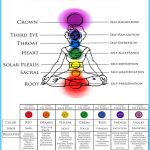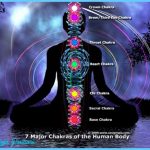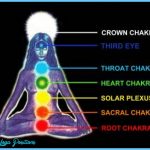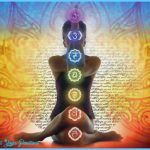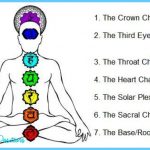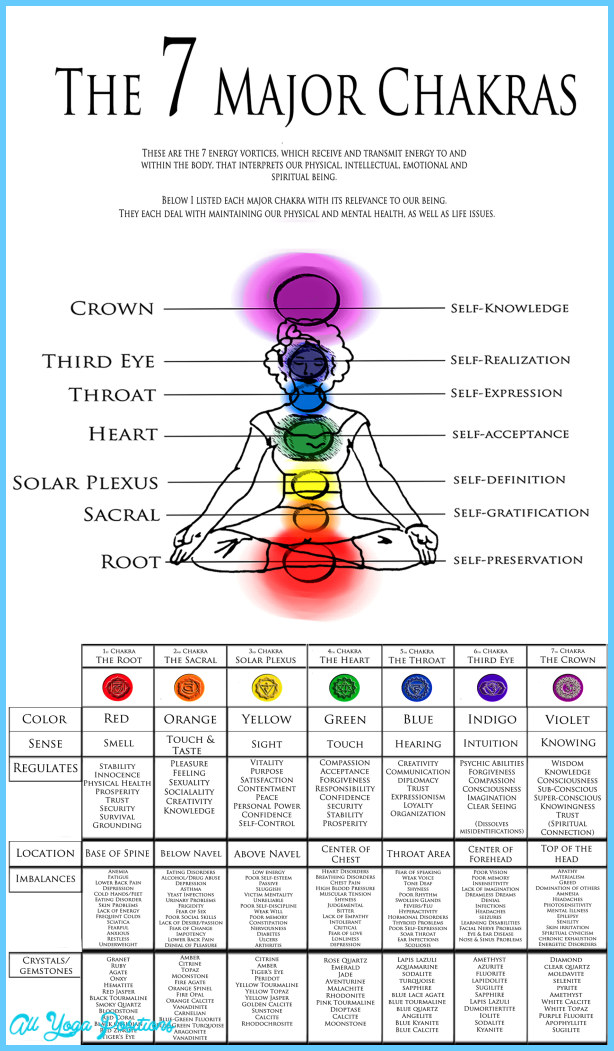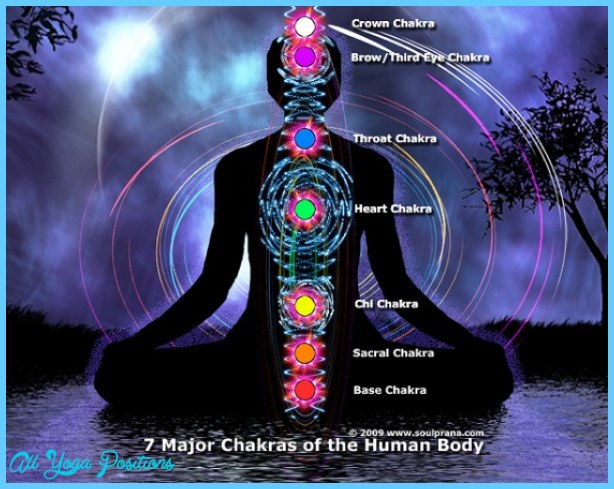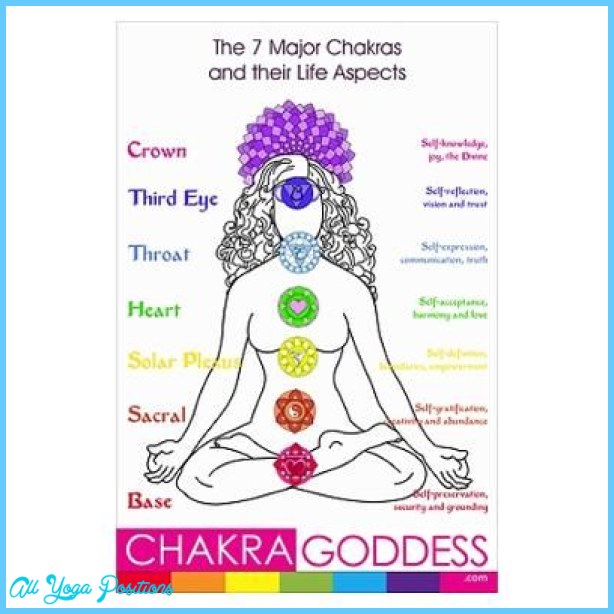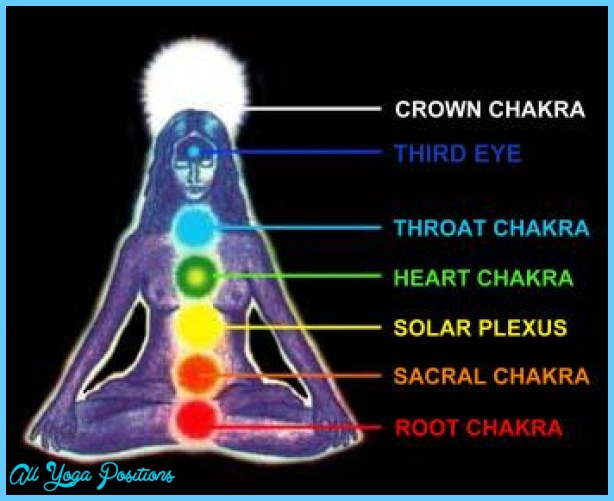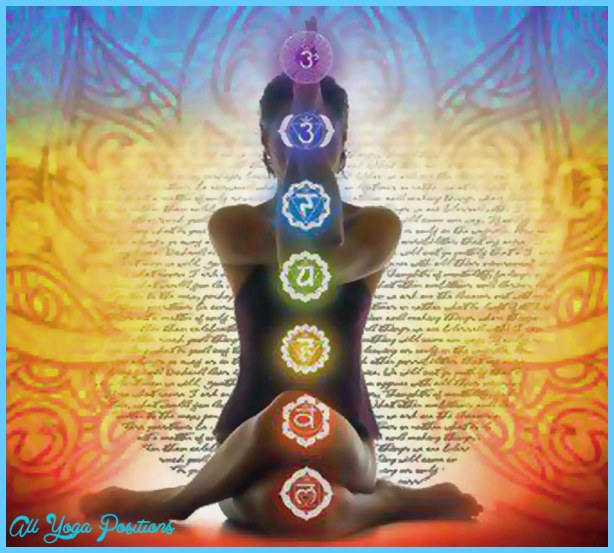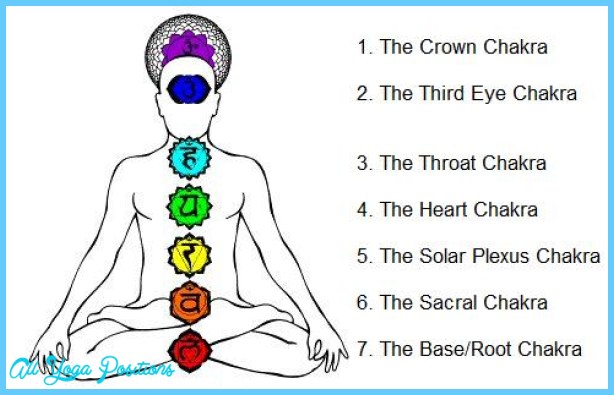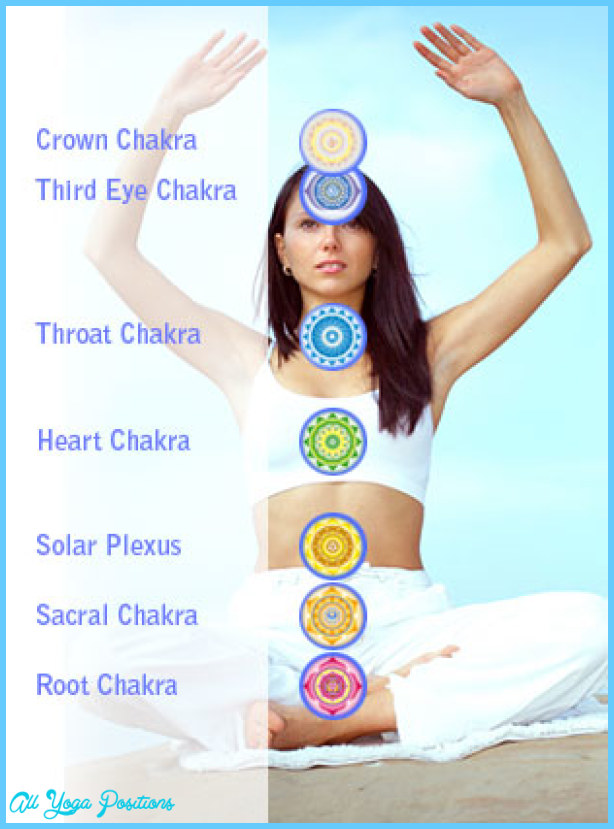Both yogic thought and Ayurvedic medicine recognize and accept the fact that the chakras rest within the astral body or emotional body. Chakras cannot be described in general psychological or physiological science as the empirical mind prefers. One cannot touch chakras or see them
The chakras act as an interchange or liaison between our physical and psychological energy. This energy or prana, the life force, travels up the body. Through meditation, visualization, asana, and mantra techniques, the yogi strives to clear blocked energy in the chakra regions.
The seven major chakras have specific locations in the body, and each chakra corresponds to physical functions in the body. In esoteric Eastern thought, the chakras are symbolized by a color and an element. Each chakra is depicted by lotus petals corresponding with the number of nadis, or nerve channels, emanating from each chakra. The chakras are referred to in ascending order beginning with the lowest or base chakra. This is where the kundalini is located. The kundalini, or dormant energy, is always represented by a coiled snake. In order for the energy to rise up through the chakras, the kundalini must uncoil.
The Seven Major Chakras Photo Gallery
Maybe You Like Them Too
- Yoga for Memory Improvement A Mindful Approach to Boosting Brain Power
- The Journey of Self-Discovery in Yoga A Guide to Finding Your True Self
- Yoga for Lower Back Pain 10 Asanas to Relieve Discomfort
- The Inner Sanctuary A Guide to Creating a Sacred Space for Meditation
- Marichyasana I A Yoga Pose for Deep Stretching and Core Strength

